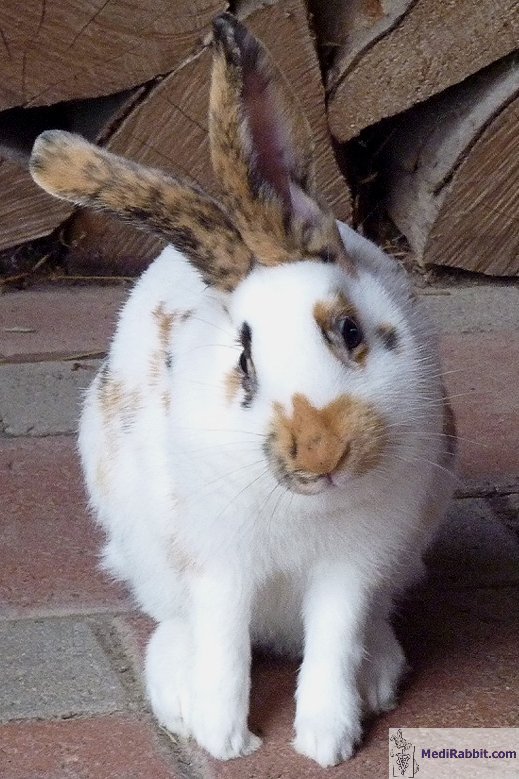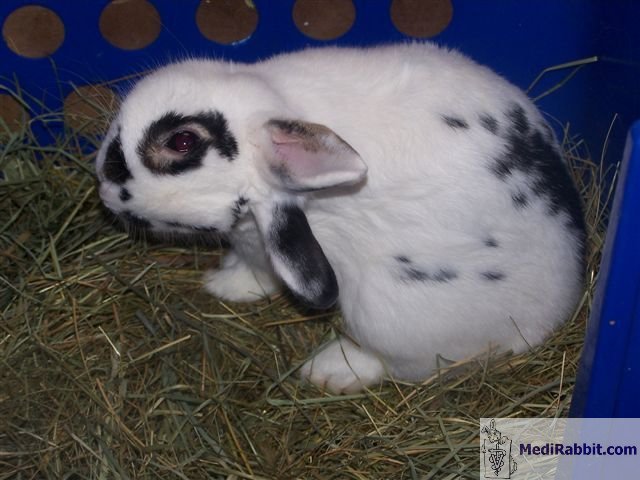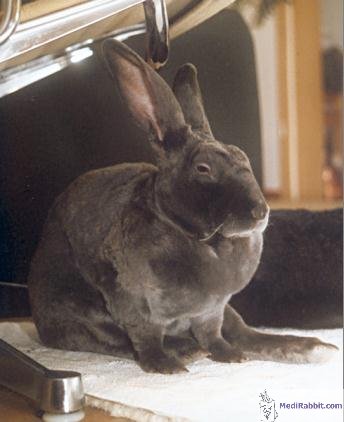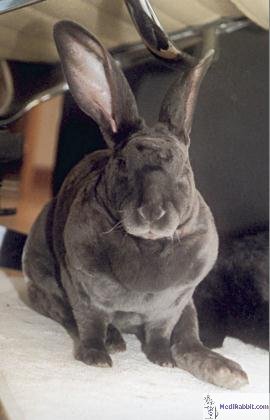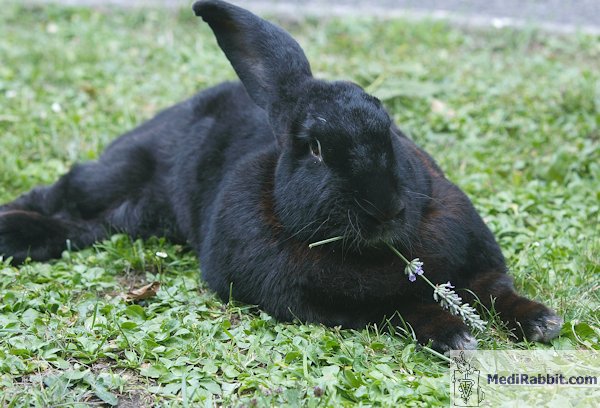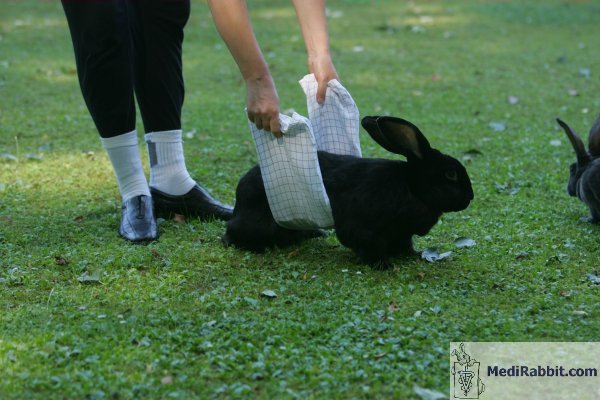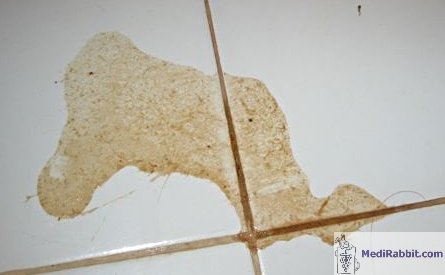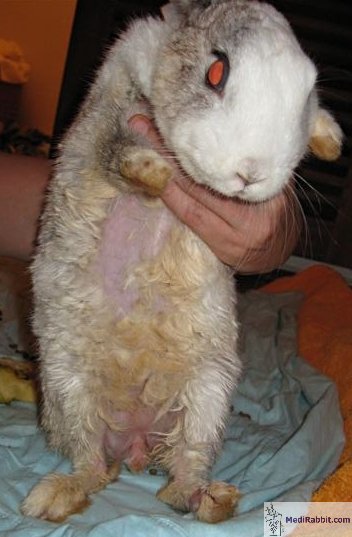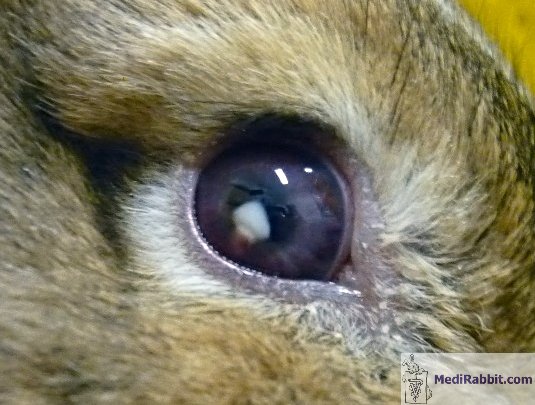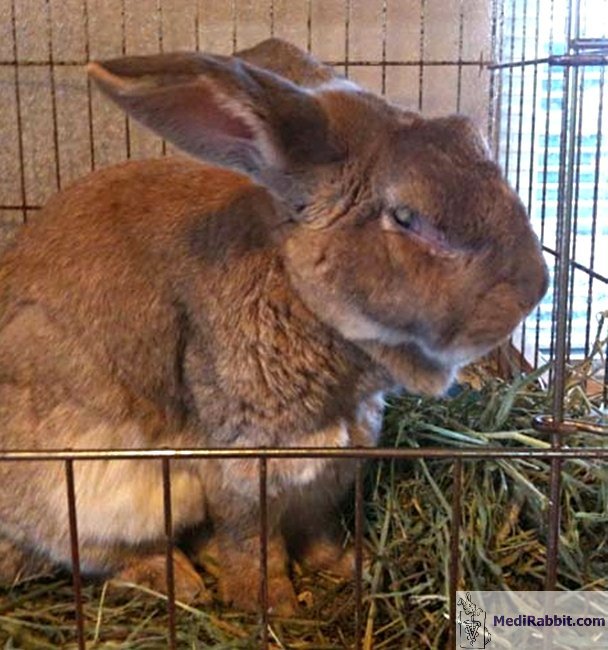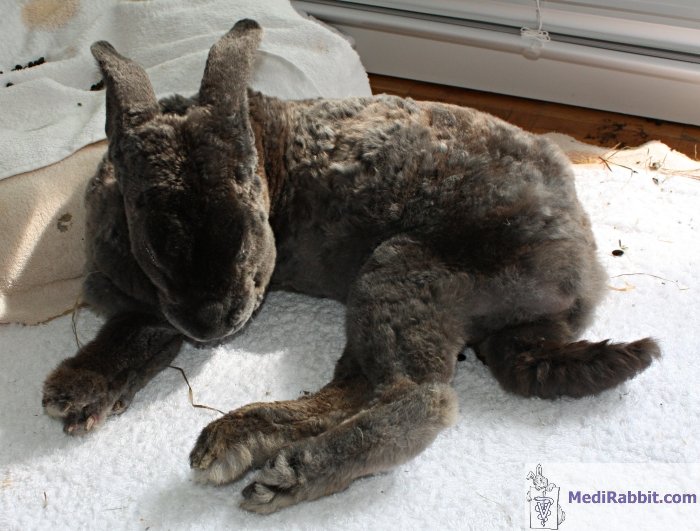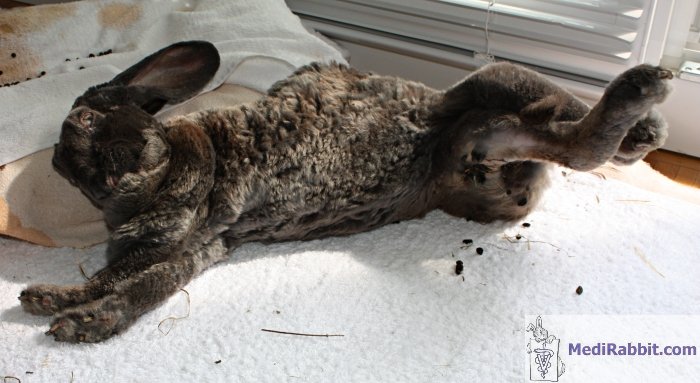Illustrative
guide of clinical signs of rabbits with E. cuniculi
Esther van Praag, Ph.D.
|
MediRabbit.com is
funded solely by the generosity of donors. Every
donation, no matter what the size, is appreciated and will aid in the
continuing research of medical care and health of rabbits. Thank you |
|
The protozoal parasite Encephalitozoon cuniculi
lives in the nervous system and major organs of rabbits. A variety of
clinical signs characterize the disease, yet they vary from one rabbit to
another, rendering diagnosis of the disease difficult. Damage is observed on organs, causing liver failure
and kidney failure and calcification. These changes affect the biochemical
parameters and can be measured during a complete blood test. The behavior and general appearance of a rabbit can
be affected. Main signs that are characteristic for an E. cuniculi
infection are illustrated here. Limb weakness and pressure on the inner ear
can lead to a loss of balance and hopping in circles. In the end phase, seizure attack become usually more
frequent and stronger, and the rabbit can become comatose and die. More or less
pronounced torticollis (commonly called head tilt or wry neck)
Hind limb weakness and
paralysis
Paralysis of the hindlimbs
Incontinence
Phacoclastic uveitis, cataracts, nystagmus
Neurological signs such
as seizure with convulsions, shuddering
AcknowledgementThanks are due to Dr. Magdalena Stasiowska
(Przychodnia Weterynaryjna
– Wrocław, Poland), to Michel Gruaz, (Switzerland) and to
Emma Staub (USA). Many
thanks also to Renee Brennan for sharing the video of her head-tilted rabbit
Rudy. Further information
Biderre C, Mathis A,
Deplazes P, Weber R, Metenier
G, Vivares CP. Molecular karyotype diversity in the
microsporidian Encephalitozoon cuniculi. Parasitology. 1999; 118 ( Pt 5):439-45. Deplazes P, Mathis A,
Baumgartner R, Tanner I, Weber R. Immunologic and molecular characteristics
of Encephalitozoon-like microsporidia isolated from humans and rabbits
indicate that Encephalitozoon cuniculi is a zoonotic parasite. Clin Infect Dis. 1996; 22(3):557-9. Gomez-Bautista M, Rojo-Vazquez FA.
Chemotherapy and chemoprophylaxis of hepatic coccidiosis with sulphadimethoxine and pyrimethamine.
Res Vet Sci. 1986; 41(1):28-32. Gray LC, Magdesian KG, Sturges
BK, Madigan JE. Suspected protozoal myeloencephalitis
in a two-month-old colt. Vet Rec. 2001; 149(9):269-73. Lindsay DS, Dubey JP. Determination of the activity of pyrimethamine, trimethoprim, sulfonamides, and
combinations of pyrimethamine and sulfonamides
against Sarcocystis neurona
in cell cultures. Vet Parasitol. 1999;
82(3):205-10. Mrema JE, Rieckmann KH. A rabbit--in vitro system to evaluate drug action
against Plasmodium falciparum. Trans R Soc
Trop Med Hyg. 1983; 77(1):130-5. Mathis A, Akerstedt J, Tharaldsen
J, Odegaard O, Deplazes
P. Isolates of Encephalitozoon cuniculi from farmed blue foxes (Alopex lagopus)
from Norway differ from isolates from Swiss domestic rabbits (Oryctolagus
cuniculus). Parasitol Res. 1996; 82(8):727-30. Mathis A, Michel M, Kuster H, Muller C,
Weber R, Deplazes P. Two Encephalitozoon
cuniculi strains of human origin are infectious to rabbits. Parasitology.
1997; 114 (Pt 1):29-35. Moore LA, Johnson PJ, Messer NT, Kline KL, Crump LM, Knibb JR. Management of headshaking in three horses
by treatment for protozoal myeloencephalitis. Vet
Rec. 1997; 141(11):264-7. Peeters JE, Geeroms R, Halen P. Evolution of coccidial
infection in commercial and domestic rabbits between 1982 and 1986. Vet Parasitol.
1988; 29(4):327-31. Peeters JE, Geeroms R, Froyman R, Halen P. Coccidiosis in rabbits: a field study. Res
Vet Sci. 1981; 30(3):328-34. Suter
C, Muller-Doblies UU, Hatt
JM, Deplazes P. Prevention and treatment of Encephalitozoon
cuniculi infection in rabbits with fenbendazole. Vet Rec. 2001;
148(15):478-80. Sobottka I, Albrecht H, Visvesvara
GS, Pieniazek NJ, Deplazes
P, Schwartz DA, Laufs R, Elsner
HA. Inter- and intra-species karyotype variations among microsporidia of the
genus Encephalitozoon as determined by pulsed-field gel
electrophoresis. Scand J Infect Dis. 1999;
31(6):555-8. Thomas C, Finn M, Twigg L, Deplazes P, Thompson RC. Microsporidia (Encephalitozoon
cuniculi) in wild rabbits in Australia. Aust
Vet J. 1997; 75(11):808-10. Tassignon MJ, Brihaye M,
De Meuter F, Vercruysse
A, Van Hoof F, De Wilde F. Efficacy of treatments in experimental
toxoplasmosis Bull Soc Belge
Ophtalmol. 1989;
230:59-72. French. |
||||||||||||||||||
e-mail: info@medirabbit.com



